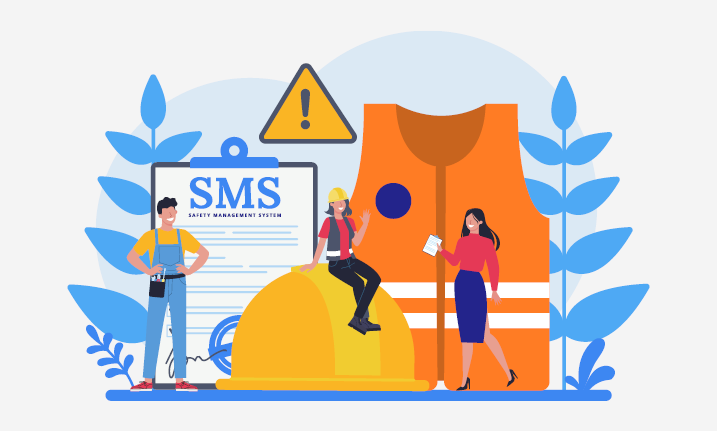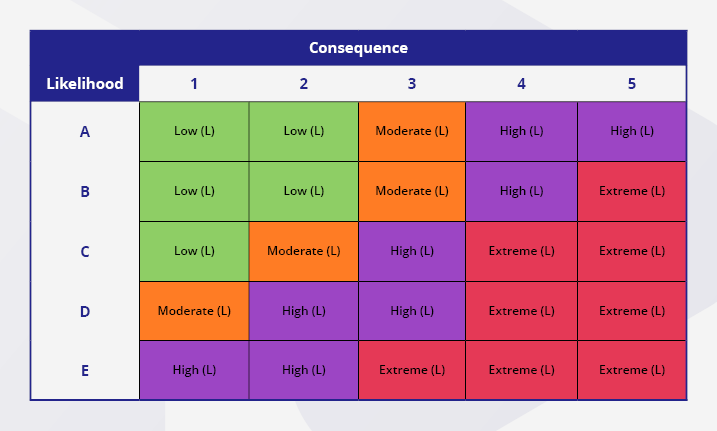

An effective safety management system can help your organisation keep your employees, contractors and site visitors safe. It can assist your business to comply with workplace health and safety regulations and make it simpler to manage risks.
A safety management system (SMS) refers to a set of structured, company-wide processes that provide a framework for risk-based decision-making to support safe business operations.
Why are safety management systems important?
The main purpose of a SMS is to provide a systematic approach to managing safety risks in the workplace. A SMS is crucial for high-risk industries such as manufacturing, transport and construction to improve safety by building on existing processes, demonstrating corporate due diligence, and reinforcing overall safety culture.
Recommended reading: Why your business needs a WHS management system
What are the key components of a safety management system?
A SMS has four main components needed for successful implementation and maintenance of the system. These are described further below.
1. Safety policy and objectives
An effective SMS must have a robust policy and layout clear objectives.
Employers should make safety an integral part of company values and demonstrate their commitment to a safety-first approach daily. Safety accountability and responsibilities should be clearly defined, and key safety personnel should be appointed to manage various elements of the SMS to ensure effective control of safety risks for your workplace.
2. Safety risk management
To effectively control and mitigate safety risks, designated staff should perform a series of processes that typically include four main steps in the risk management process:
- Identify the hazards
- Analyse the risks
- Conduct a risk assessment and
- Control the risks

3. Safety assurance
Safety assurance is the component of a SMS that involves monitoring risk controls during operations. It allows everyone to play their role in monitoring and mitigating safety risks.
Common functions of the safety assurance element can include safety audits and incident reporting systems. These systems are integral to the on-going improvement of the SMS, as well as enabling the implementation of preventative and corrective actions to eliminate and or reduce workplace risks.
4. Safety promotion
Safety promotion is important to support the successful integration of a SMS in an organisation. Activities include training and knowledge sharing, as well as clear safety communications.
The benefits of having a SMS
The benefits of having a SMS in your organisation can be huge and far-reaching:
1. Improved health and safety performance
When everyone across the organisation – from management to employees, to contractors and visitors can clearly identify risks, manage hazards, and report any issues, there is a clear link with improved health and safety performance.

2. Reduced cost associated with incidents
It can be incredibly costly to fix mistakes. The more incidents you can avoid, the less you’ll be liable for in terms of insurance, hiring temporary staff, or managing a damaged reputation.
A formal SMS can help to reduce the likelihood of incidents and accidents occurring and this will, in turn, lower your organisation’s costs of dealing with them.
3. Increase business efficiency and improve staff morale
An effective SMS can help improve efficiency and productivity by:
- Reducing the amount of downtime associated with any incidents;
- Improving team morale leading to increased staff retention;
- Lowering training costs associated with employee turnover;
- Reducing the costs of replacing or repairing damaged property and equipment;
- Reducing your insurance premiums and compensation payouts;
- Reducing the time and cost spent investigating accidents, leading to reduced work delays
4. Improved cost management
Insurers may offer reduced premiums if your organisation can demonstrate that safety risks are effectively controlled. The SMS can also help to reduce accidents in the workplace which may lead to costly down-time and workers compensation claims.
5. Increased regulatory compliance
Without an effective SMS your business is vulnerable to unwittingly breaching regulatory compliance, either due to negligence or human error.
An effective SMS can help to ensure your organisation is complying with all legal requirements, maintains safe daily operations and avoids reputational damage and financial penalty.
How Rapid can help improve and streamline your safety management system
Managing a paper-based system is complicated and time-consuming. Rapid’s fully integrated and modular workforce management system has been designed to streamline and automate your workplace health and safety, compliance, and risk management processes. Giving you the ability to:
- Improve risk management, with Rapid Risk
- Automate your safety audits, with Rapid Auditor
- Embrace easy and comprehensive incident reporting with Rapid Incident Reporting
- Easily implement safety inductions and training with Rapid Induct
- Streamline visitor management through Rapid GO or Rapid Access
- Easily manage contractors via Rapid Contractor Management
- Issue work permits online with Rapid Permit To Work

The Future of Contractor Management
Download our free business guide to discover the tools companies are using to automate their contractor management processes.
Read moreIt’s time to take a step towards improving your WHS management system
Some of the world’s leading organisations rely on Rapid’s modular workforce management system to improve safety, manage risks, and streamline WHS processes. Are you ready to join them?
Speak to our experts today and request a demo to see how Rapid’s products can help you.







